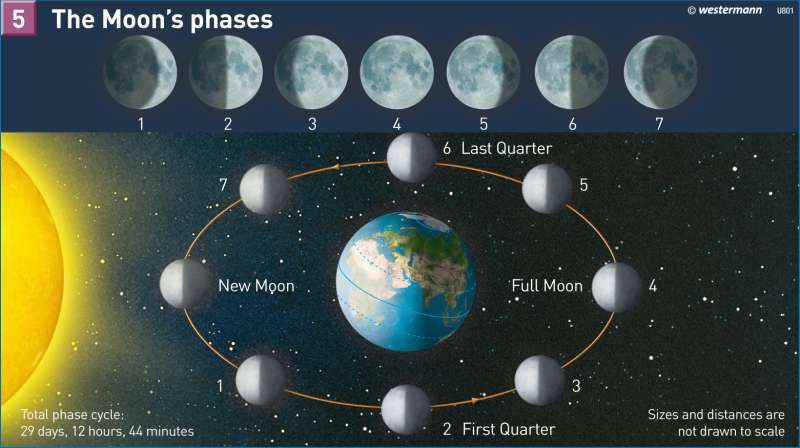The Moon's phases
The Earth in the Universe
978-3-14-100790-9 | Page 202 | Ill. 5

Information
From a great distance of around 150 million kilometres, almost parallel rays from the Sun illuminate one half of the Earth and of the Moon. According to the Moon's position from the Earth's perspective, an observer sees the completely illuminated half Moon from the Earth's night side (full moon, position 4) or, partly illuminated, the waxing half Moon (position 2) during the first quarter or the waning half Moon during the third quarter (position 6); the new Moon cannot be seen during the day. The Moon actually takes 27 days, seven hours and 43 minutes (a sidereal month) for a complete revolution around the Earth. However, while the Earth continues its simultaneous orbit of the Sun, the Moon requires the extended time of 29 days, 12 hours and 44 minutes to complete the same phase, that is, until the Sun, Earth and Moon reach the same position (a synodic month). The latter determines the length of the months.A. Schulz; Ü: C. Fleming




